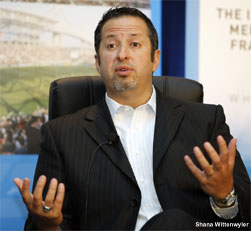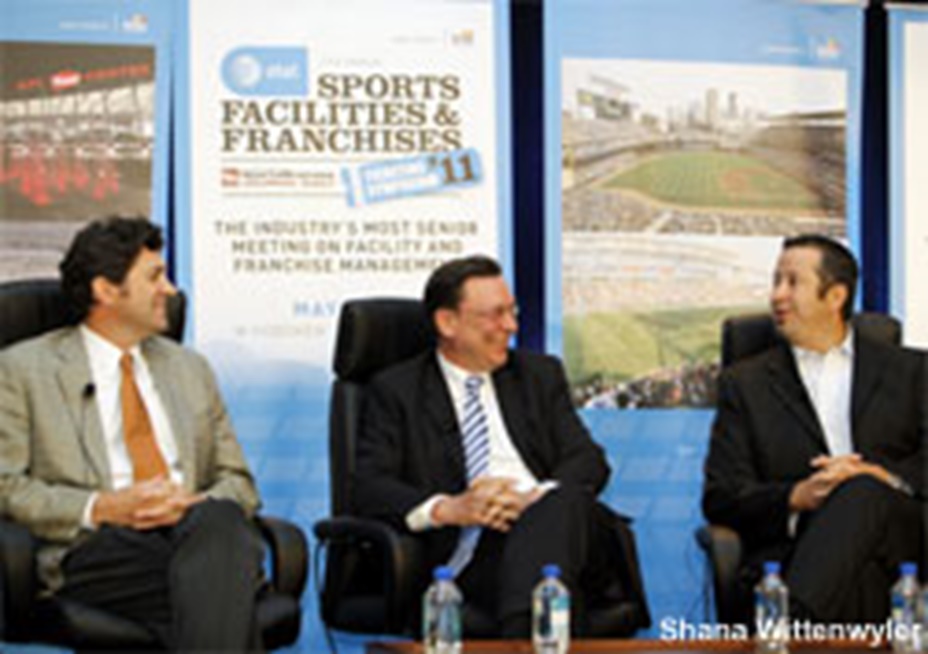The final panel at the AT&T Sports Facilities and Franchises conference on Thursday brought together some of the top execs in sports PR for a session titled, “Building Successful Communications Strategies for your Franchise and Facility.” Much of the discussion hinged on the question of when it is better to adopt a proactive or reactive communications strategy. LPGA Chief Communications Officer David Higdon: “When I came on with the LPGA two-and-a-half years ago, the whole team was in very much a reactive mode … and it just wasn’t working. … We have to aggressively pitch our stories.” USTA Managing Dir of Corporate Communications Chris Widmaier: “If you’re not thinking of ways to make your sport intriguing, then you’re not going to get any space.” Chip Ganassi Racing VP/Communications John Olguin: “We’re in a sport where we don’t have hometown media. … If we don’t tell our story, somebody else will, and chances are you’re not going to like the way they tell it.” Comcast-Spectacor VP/Public Relations Ike Richman cited having an in-house PR professional cover the 76ers and Flyers on the road as an example of being proactive, but said the front office is “just as reactive with Twitter,” a space that requires the organization to “put out fires.” Red Sox Senior VP Public Affairs & Marketing Susan Goodenow said despite the obvious hunger for information on her team in Boston, the organization has to “reach out and have a team of creative people who don’t have a sports background” in order to pitch stories “beyond the game.” Olguin gave two examples of upcoming coverage of his team’s drivers in lifestyle publications: a Redbook story on Juan Pablo Montoya’s wife and Graham Rahal making Cosmopolitan’s list of most eligible bachelors.
 |
Olguin talks about how he handles negative
stories appearing in the press |
PRINT BUTTON: The panelists discussed the importance of newspaper coverage despite the current climate of media fragmentation. Richman: “Every morning show producer is reading the paper, every TV sportscaster is reading the paper. It almost programs the news that day.” Goodenow: “Our core fans are the ones that are going to look to the newspaper.” Widmaier said that a story being online-only on a newspaper site but not in the print edition is “nearly as effective.” He added, “The N.Y. Times influences all people. They still do.” The N.Y. Post’s Page Six is “still one of the most influential outfits there is.” Richman later said, “We work for the media. We have to help them get what they want.” Olguin said it is “not that important” for him to have people on his communications staff with newspaper experience and that he prefers to hire people with an agency background. Olguin: “If you can sell paper clips, you can sell sports.” When asked about reacting to negative stories, Olguin said, “My first question is, 'Is it accurate?' … As far as getting mad at the writer, if the story is accurate, I won’t do that.” Higdon added if a negative story is in the press, “the genie is out of the bottle,” and “what you need to do is follow up with other stories, work with other reporters, get your own story out there.” Widmaier brought up the issue of “a one-day story becoming a two-day story becoming a three-day story.” Higdon gave the example of the LPGA’s controversy with English language requirements, which was largely the impetus for his being hired. Higdon: “They kept letting it go, and then it became … a social story and a political story.” Asked about the NFL’s response to Cowboys Stadium's Super Bowl XLV seating issues, Widmaier called it an “utter disaster.” Widmaier: “It was so poorly handled, I was shocked.”
WHAT, ME WORRY? At the end of the talk, the panelists were asked about what keeps them up at night. Higdon: “Growth for our sport.” Widmaier: “Media fragmentation and the changing world.” Olguin: “Social media. … Anybody who says they’re an expert, I challenge them on being an expert, because it’s changing daily.” Richman: “How I am going to get the next big story.” Goodenow: “Balancing branding and sales messages.”





